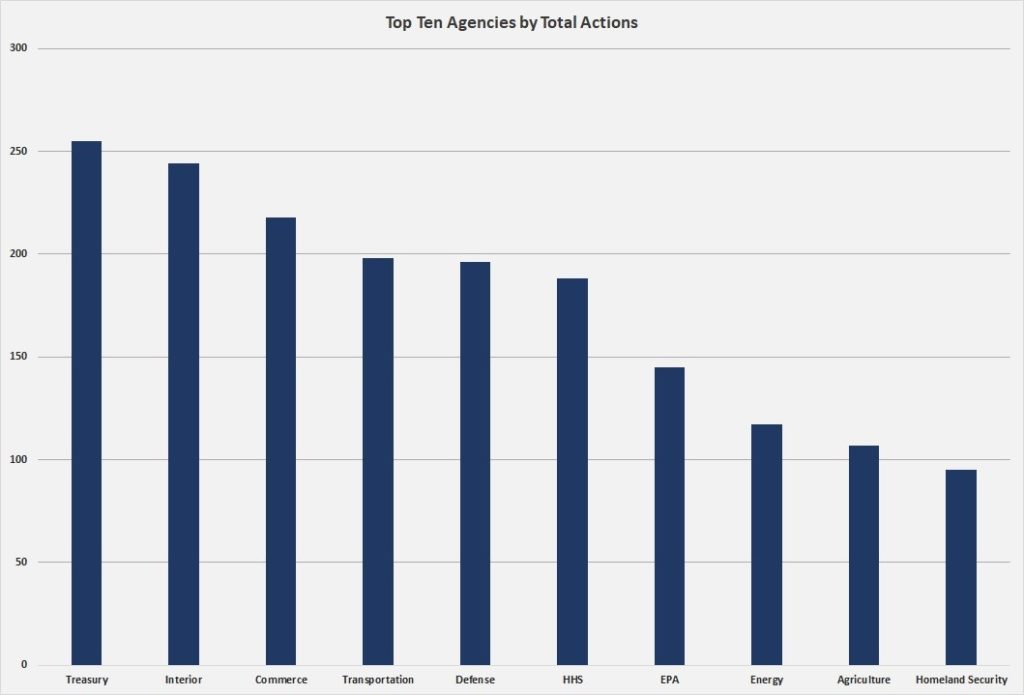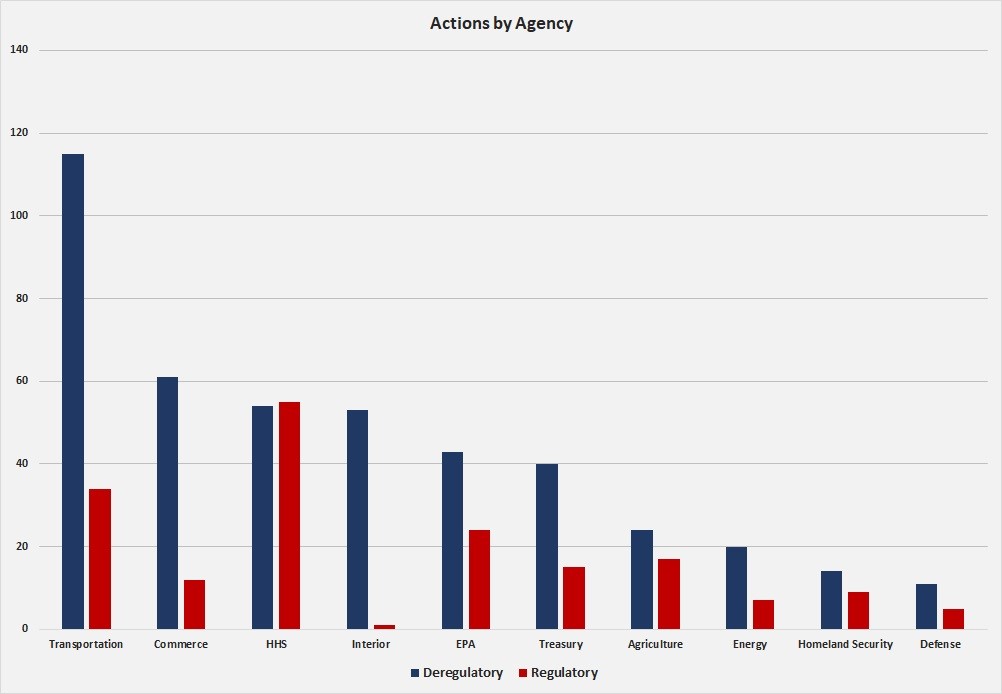Week in Regulation
December 2, 2019
A Pair of Health Care Transparency Regulations Highlight Short Week
Last week only had four work days due to Thanksgiving, but there was some activity on the regulatory front. Over the course of the past week, two regulatory actions regarding health care issues accounted for the vast majority of new costs. All other rulemakings with some quantified economic impact brought a cumulative $16 million in total new costs. Across all rulemakings, agencies published $2.2 billion in total net costs and added 6.2 million hours of annual paperwork.
REGULATORY TOPLINES
- New Proposed Rules: 41
- New Final Rules: 70
- 2019 Total Pages: 65,790
- 2019 Final Rule Costs: $25.6 Billion
- 2019 Proposed Rule Costs: $54 Billion
TRACKING THE REGULATORY BUDGET
The most notable rulemaking was the administration’s latest proposal – promulgated jointly by the Department of Health & Human Services (HHS), Internal Revenue Service, and Employee Benefits Security Administration – regarding “Transparency in Coverage.” The proposed rule would require insurance companies to disclose further information regarding a variety of aspects of their customers’ cost-sharing burden. The agencies estimate that this would yield nearly $129 million in annualized costs, or roughly $1.8 billion in present value. Since it is still a proposed rule, these costs do not yet accrue to the fiscal year (FY) 2020 regulatory budget under Executive Order (EO) 13,771.
In terms of actions that do apply to the FY 2020 budget, HHS published a final rule regarding price transparency for hospitals. The rule establishes “requirements for all hospitals … in the United States for making hospital standard charges available to the public.” HHS estimates that the administrative burden of these new requirements is roughly $23 million annually, or $329 million in present value. As of this week, HHS has been one of the more active agencies for EO 13,771 activity in FY 2020 with seven such actions attributable to it either in part or in full. The Departments of Transportation (DOT) and Agriculture also have seven actions to their credit.
For FY 2020, agencies have finalized 26 deregulatory actions and 10 regulatory actions, totaling $1.7 billion in quantified total net costs. The Trump Administration has yet to release its regulatory budget goal for FY 2020, though it is expected soon.
THIS WEEK’S REGULATORY PICTURE
This week, an agency-by-agency look at key regulatory agenda data.
The week of Thanksgiving was a relatively limited one in the pages of the Federal Register, so it’s worth taking a deeper dive into the Fall 2019 Unified Agenda of Regulatory and Deregulatory Actions, featured in this space last week.
While we wait for final accounting from the Trump Administration to see how agencies did relative to their FY 2019 regulatory budgets, the latest regulatory agenda sheds some light on the pipeline of federal regulatory and deregulatory activity.

The chart above shows the 10 agencies with the largest number of rulemakings under development. These agencies combine to make up 68 percent of all rulemakings listed in the regulatory agenda.
When these agencies are broken down into their expected regulatory and deregulatory actions for purposes of EO 13,771, we find that the number of deregulatory actions is not necessarily proportional to the number of total actions.

DOT has the most deregulatory actions despite having the fourth-most total actions. At 58 percent, its percentage of deregulatory actions is by far the largest of any agency listed here. The next closest are the Environmental Protection Agency (30 percent) and HHS (29 percent). The Department of the Treasury, which had the most total actions, has just a 16 percent deregulatory rate.
The main takeaway from the charts is while having a lot of total actions in the regulatory agenda helps agencies have a larger number of deregulatory actions, it is far from the determining factor.
TOTAL BURDENS
Since January 1, the federal government has published $79.6 billion in total net costs (with $25.6 billion in finalized costs) and 57 million hours of net annual paperwork burden increases (with 45.2 million coming from final rules). Click here for the latest Reg Rodeo findings.












